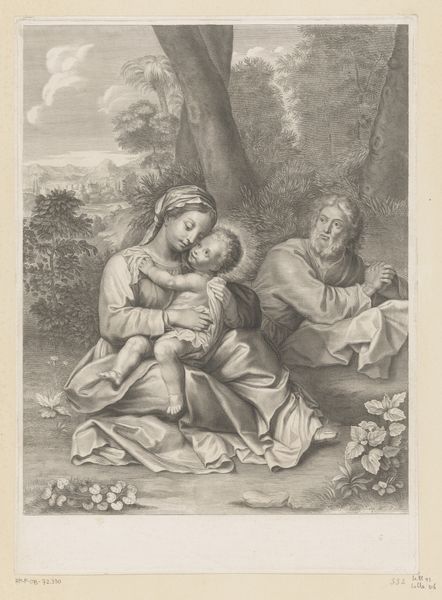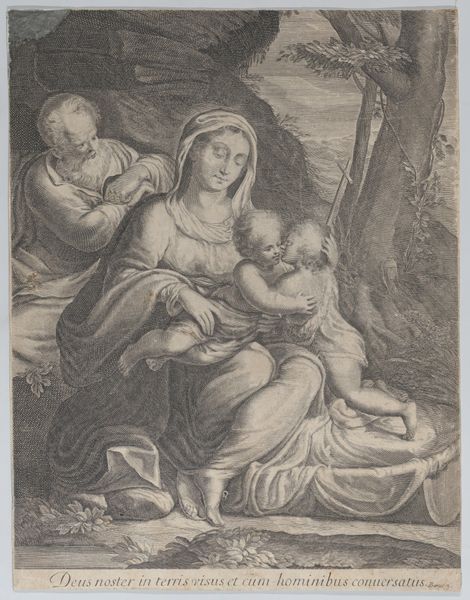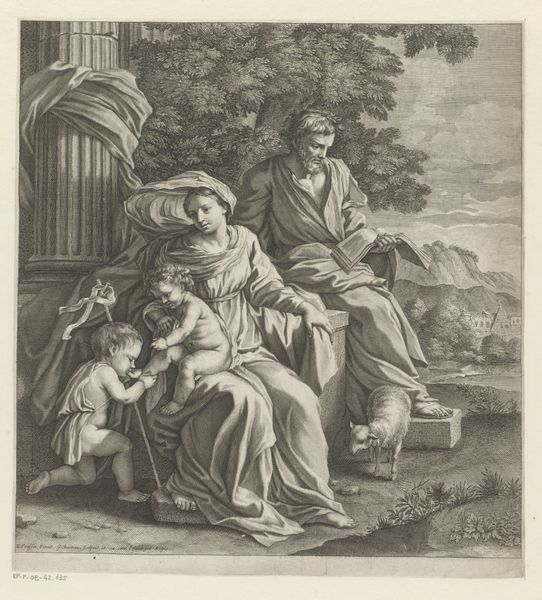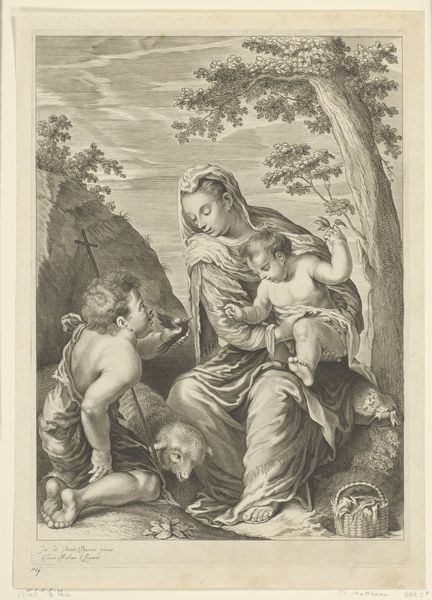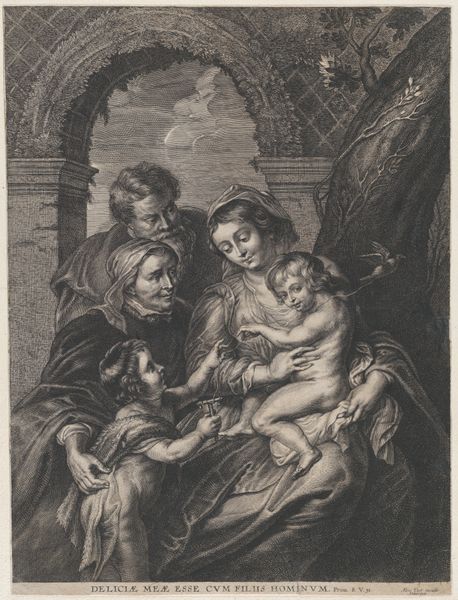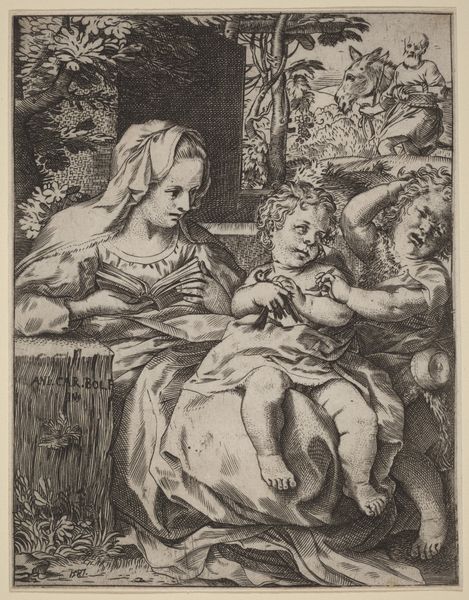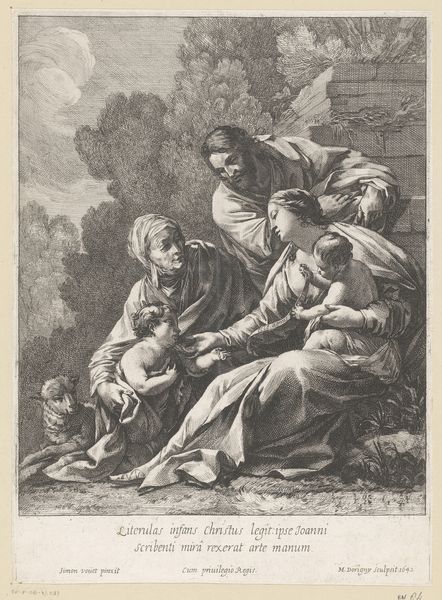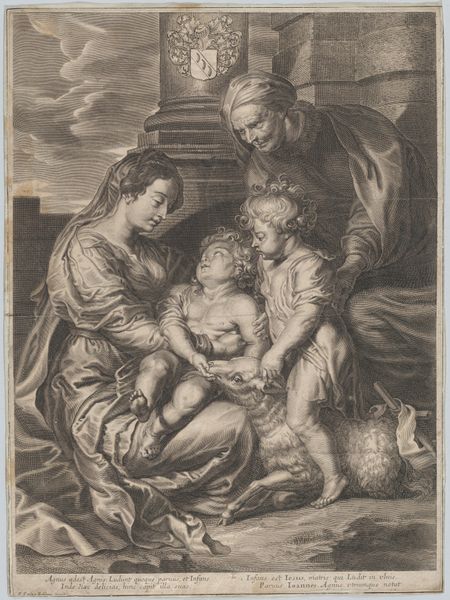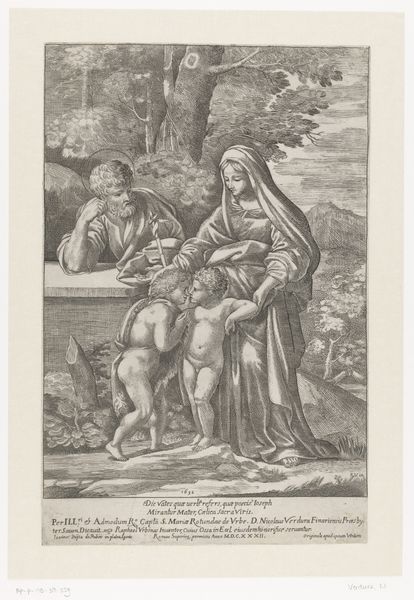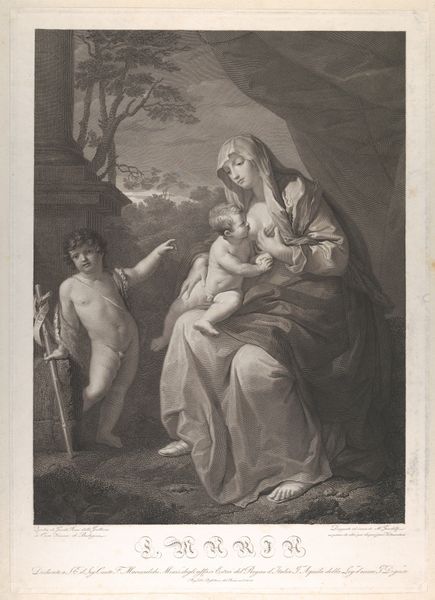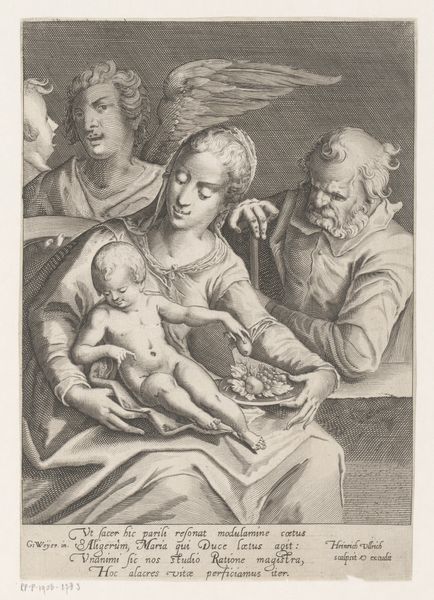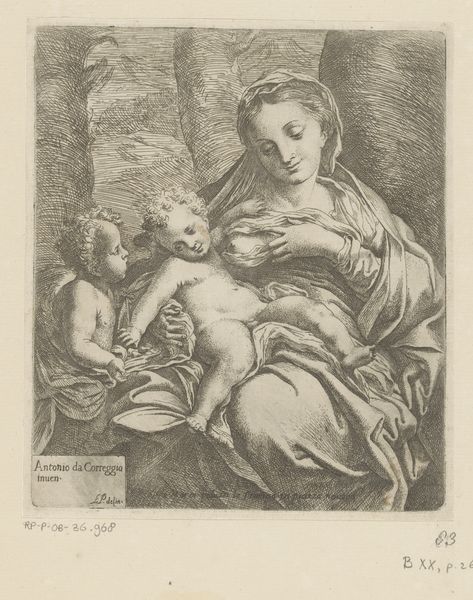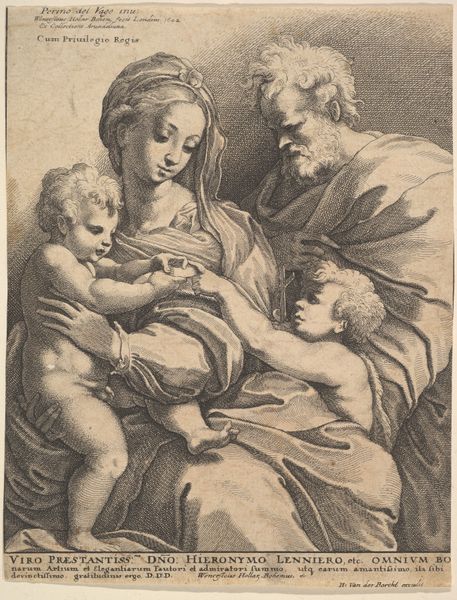
Maria met kind staand in kribbe, en Elisabet met Johannes 1655 - 1728
0:00
0:00
francoisdepoilly
Rijksmuseum
print, engraving
#
portrait
#
baroque
# print
#
old engraving style
#
figuration
#
history-painting
#
engraving
Dimensions: height 367 mm, width 298 mm
Copyright: Rijks Museum: Open Domain
Curator: Let’s take a moment with this print, "Maria met kind staand in kribbe, en Elisabet met Johannes" by Francois de Poilly, dating back to somewhere between 1655 and 1728. It's housed here at the Rijksmuseum. Editor: The mood is immediately reverent, wouldn’t you say? And intimate, despite its scale. Almost like peering into a whispered secret shared among family. Curator: It is remarkably intimate, considering the rather traditional subject matter. What strikes me is the exquisite detail achieved through engraving. The lines, the shading – it's almost painterly. You can practically feel the texture of the fabric. Editor: And those fabrics speak volumes. The Virgin’s flowing gown compared to Elizabeth’s simple head covering? One emphasizes divine motherhood while the other conveys the humble service typical of women's work in this era, perhaps drawing a parallel with Poilly's painstaking labor as a craftsman producing multiple impressions of this sacred scene. Curator: Interesting take! For me, there's such a delicate balance between the earthly and the divine. Note how the figures, bathed in a gentle light, contrast against the wilder landscape. A beautiful contrast to emphasize the sacred act occuring. Editor: Yes, the light leads the eye – drawn to Maria’s face, so gently downcast, yet so clearly filled with a knowledge that will forever separate her from mortal existence. Do you think, through distributing the engraving, de Poilly aimed to capture both religious devotion and a wider culture of accessible consumption through art? Curator: It's definitely a thought provoking point and very in line with the Baroque's ethos. Reproducibility undoubtedly played a significant role in expanding accessibility of this composition to larger audiences beyond the confines of aristocracy. He democratizes the divine, in a way. Editor: Well, pondering those lines makes one appreciate not just the artistic mastery but the whole infrastructure required to distribute them so widely back then! Curator: Indeed. This little engraving is a world in itself, wouldn't you agree? Editor: Absolutely, a window onto devotion, labour and even commerce, cleverly disguised in humility.
Comments
No comments
Be the first to comment and join the conversation on the ultimate creative platform.
